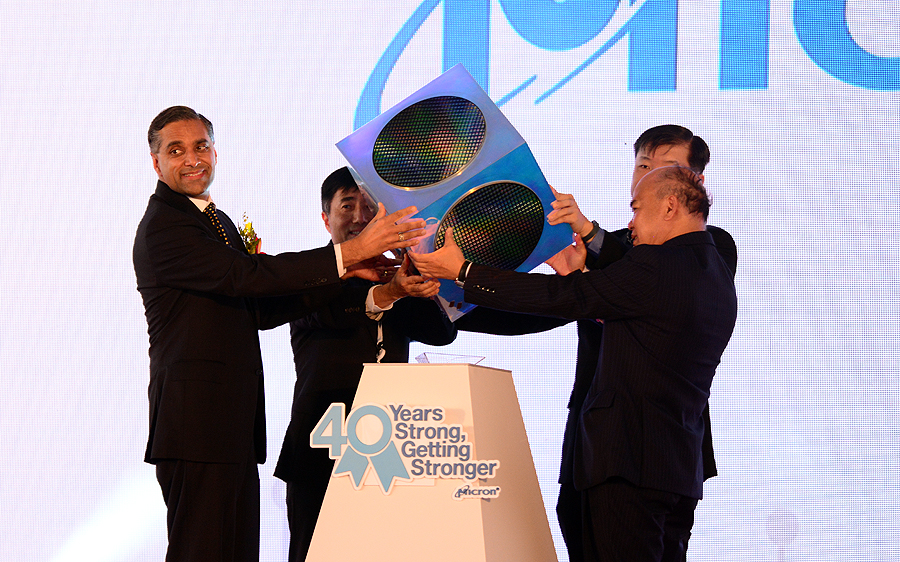- Ameya360 Component Supply Platform >
- Trade news >
- UMC Files Countersuit Against Micron
UMC Files Countersuit Against Micron
United Microelectronics Corp.(UMC)said it filed a lawsuit against Micron Technology subsidiaries in China for patent infringements that are part of a growing wrangle related to memory chips.
The countersuit comes nearly a month after Micron filed suit against UMC in the U.S.
As China seeks to establish a domestic semiconductor industry to offset the billions of dollars of chips that it imports annually,legal skirmishes between the U.S.and China have started in the memory segment,where China aims to grab a slice of the business that's dominated by Samsung,SK Hynix and Micron.
Hsinchu,Taiwan-based UMC has been expanding its business in China,the world's largest and fastest growing semiconductor market.In addition to operating foundries in China,the company has licensed memory technology to various companies there.
“After conducting an in-depth review,UMC found that Micron's products sold in mainland China did indeed infringe upon the patent rights of the company,and thus patent infringement litigation has been pursued in order to obtain fair judgment,”UMC said in a press statement issued last Friday(Jan.12).
On Dec.4 last year,Micron filed a civil suit in federal court in Northern California under the Defend Trade Secrets Act and civil provision of the Racketeer Influenced and Corrupt Organization Act against against UMC and China's Fujian Jinhua Integrated Circuit Co.(JHICC)alleging theft of its trade secrets and other misconduct.
JHICC has transferred technology from UMC and invested$5.65 billion in a local fab for memory production.JHICC is part of the“crucial manufacturing arrangement of China's 13th Five-Year-Plan”,according to the company website.
This all comes against the backdrop of China’s huge plans for the memory business.Nearly a year ago,China announced a$24 billion memory project in central China’s Wuhan city.Yangtze River Storage Technology(YRST),leading the effort,aims to build 3D NAND fabs.YRST is backed by China’s Tsinghua Unigroup,a state-run company.
Tsinghua Unigroup has another DRAM and 3D NAND project in Nanjing.The total investment in both projects exceeds$54 billion.
UMC Filing
UMC said it is filing suit against Micron Semiconductor(Xi'an)Co.Ltd.and Micron Semiconductor(Shanghai)Co.Ltd.in the Fuzhou Intermediate People's Court of the People’s Republic of China(PRC).The lawsuit covers three areas that allegedly infringe upon UMC’s patent rights in China,including memory applications that relate to DDR4,SSD and memory used in graphics cards.
In the complaint,UMC has requested the court to order potential defendants to stop manufacturing,processing,importing,selling and intending to sell the allegedly infringing products,destroy all inventory and related molds and tools and demand that Micron compensate UMC for a total amount of RMB 270 million($41.8 million)in damages.
Online messageinquiry

Micron to buy-out Intel's IM Flash

Micron Sees Weak Market Ahead

Micron collaborates with premium German automaker to advance automotive memory technologies
- Week of hot material
- Material in short supply seckilling
| model | brand | Quote |
|---|---|---|
| MC33074DR2G | onsemi | |
| RB751G-40T2R | ROHM Semiconductor | |
| TL431ACLPR | Texas Instruments | |
| BD71847AMWV-E2 | ROHM Semiconductor | |
| CDZVT2R20B | ROHM Semiconductor |
| model | brand | To snap up |
|---|---|---|
| TPS63050YFFR | Texas Instruments | |
| BU33JA2MNVX-CTL | ROHM Semiconductor | |
| BP3621 | ROHM Semiconductor | |
| STM32F429IGT6 | STMicroelectronics | |
| ESR03EZPJ151 | ROHM Semiconductor | |
| IPZ40N04S5L4R8ATMA1 | Infineon Technologies |
- Week of ranking
- Month ranking
Qr code of ameya360 official account
Identify TWO-DIMENSIONAL code, you can pay attention to























